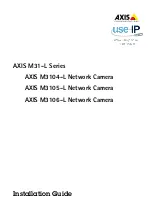
Chapter 9: LightStream Switches
In Depth
The demand for high−speed network communications has skyrocketed in the past 20 to 30 years. In the early
1970s, 9.6Kbps was considered a high−speed network. Now that we have entered the next century, network
speeds have surpassed 1Gbps with the introduction of 10Gbps technologies. This advancement has led to the
introduction of many applications that require massive quantities of data to be transferred over LAN and
WAN physical connections.
As we learned in Chapter 8, Asynchronous Transfer Mode (ATM) has become an industry standard for
transporting large quantities of data through the network. However, ATM is not supported on all Cisco
Catalyst switches. To meet the need for ATM support, Cisco introduced the LightStream series; this line of
switches is used primarily for ATM cell switching.
The LightStream series of Cisco switches are ATM switches meant primarily to run multiservice applications.
The LightStream series works well for campus backbones, service provider backbones, ATM workgroups,
metropolitan area networks (MANs), and multiple service applications. The LightStream can be found in three
primary versions: LightStream 100 (LS100), LightStream 1010 (LS1010), and LightStream 2020 (LS2020).
In Chapter 8, we looked at ATM and how ATM is configured on Catalyst switches. This chapter will
supplement Chapter 8 by discussing the features and benefits of the LightStream series of Cisco switches. The
configuration steps for each switch feature discussed in this chapter will be explained in the Immediate
Solutions section.
LightStream 100
As with all the LightStream switches, the LS100 switch shown in Figure 9.1 is a desktop ATM switch used in
the LAN, WAN, or campus backbone. This switch supports a maximum of 16 ATM lines; it supports a
maximum of 155Mbps per line, for an aggregate throughput of 2.5Gbps.
Figure 9.1: The LS100 switch.
This switch carries a unique core called the expandable ATM output−buffer modular switch (XATOMSW).
The XATOMSW component supports the buffering that takes place in order to allow the switch to provide a
guaranteed Quality of Service (QoS), making this switch a great asset in a multimedia environment. The
switch also supports mixed−media interfaces. Interface types can be mixed on an LS100 ATM switch used as
a backbone, workgroup, or WAN access switch. Table 9.1 shows the supported media types and the supported
line speeds.
Table 9.1: LS100 supported interface types and media speeds.
Interface
Media Speed
DS3/T3
45Mbps
E3
34Mbps
183
Summary of Contents for Catalyst 1900 Series
Page 1: ......
















































